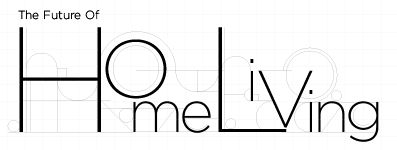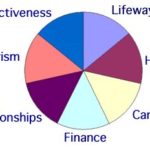
As part of our Future of Home Living Series, PSFK Labs reached out to experts to get their take on the changes we’ve identified that are driving the evolution of the home. We recently caught up with Eric Corey Freed, founder of organicARCHITECT, a firm which focuses on sustainable and innovative design and attempts to join the two in all of their projects. Read our chat with Eric below to hear more about how are homes are becoming more sustainable.
With regards to home design, what are the sustainable design innovations that you find most exciting?
This is a wonderful time to be a designer (though ironically, a terrible time to be a human being on a planet in peril).
There are a number of incredible innovations happening right now that will change how you interact with buildings in profound ways. On the design side, three-dimensional scanning and printing are no making possible things that we couldn’t do just last year. We can now scan and manipulate 3D objects in real time, and print them out in full color at a set scale. This will do for buildings, what desktop publishing did for graphic design back in 1984. Buildings will no longer have to be boring boxes. You could scan a seashell and scale it in the computer, divide it into printable segments, and print it out and move into it. That is now possible. Imagine the unlimited forms and geometries that people will develop!
On the regulatory side, we will see several inevitable things happen. Soon, all 50 states will require some minimum amount of energy benchmarking and disclosure. In a few years, you won’t be able to complete the sale of your building unless it meets a minimum standard of energy performance. Not only will this save millions in energy costs, but slash carbon emissions, create a new wave of green collar jobs and get everyone to pay attention to how they use their energy. In addition, we are finally going to see a price put onto carbon. Manufacturers and energy producers will no longer be able to dump their carbon emissions into your air for free. They will be forced to take responsibility for their own emissions. As soon as we have these types of price signal points, it will change things very quickly.
And lastly, on the consumer side, product manufacturers are generating innovative new lines of bio-based materials. If the last century was all based on oil chemistry, this next century will be focuses on bio chemistry. Your insulation might have been grown from mushrooms (mycelium), your carpet may have been grown from corn, and your tiles will be able to remove VOCs (Volatile Organic Compounds) and clean the air. Instead of a child absorbing known endocrine disruptors into their skin, these organic materials could feed them vitamins.
How can architectural and systems design help cope with the growing concerns around availability and use of resources from fossil fuels to water?
Buildings have the biggest impact of any other industry, where half of our carbon emissions come from the construction and operation of buildings. The frustratingly painful part of that is knowing how design can influence and change that impact so quickly. Here in the US we hit “Peak Oil” around 1972, which explains why that was the year we started importing oil and never looked back. Globally, we hit Peak Oil around 2003 or so, which explains the desperate push for new sources of oil. Now I think we have hit a point I call, “Peak Nature” where our resources are stretched so thin that we have to change our ways very quickly.
Most of our systems are highly interconnected, and design can upend those systems to make them work towards sustainability. For example, you may not think that food relates to the design of our cities. In reality, the two are deeply connected and costing you thousands of dollars a year.
The US spends about 42% of our farm subsidies on commodity crops like rice, wheat, soy, cotton, and corn (which are used for sugar or feed), but only 5% on healthy fruits and vegetables. Our fresh produce is grown largely in California or overseas, NOT in the “heartland” parts of the US.
Since most of the cost of food (about 84%) is tied to transportation, processing and marketing – we are wasting money, energy and carbon on food that doesn’t even provide real nutrition.
So what you get is: high food costs, low paid laborers, poor nutrition, and obese kids.
We can reverse this downward cycle through design. If we design our buildings with living walls and a green roof growing food, we instead get:
* grow food in and around our buildings
* elimination of transportation costs
* injecting the food supply with nutritious food
* pass the savings back into wages and cutting food costs
* creation of local jobs
* shade and protect the building with attractive, natural vegetation
How can design and material choices be used to combat the challenges that noise and air pollution pose for urban lifestyles?
Remember, the urban lifestyle is not responsible for the noise and pollution in a city. It’s the car that is causing that chaos. So the question really is, how do we adapt our cities to not be so fully dependent on the car?
There are a number of ways that we designers and planners have advocated for decades to get people out of their cars. Briefly:
* create density though higher number of units per acre
* develop a diversity of uses, functions, activities by avoiding single use districts
* design for walkability (make it easier to walk) by not setting the stores far back from the sidewalk
* maintain a human scale (the typical Home Depot sign is 10 feet tall)
* build community interaction through strategy of locally owned business, community events, public space
There’s nothing new here. We don’t need to even invent new ideas on how to build a robust, vibrant and people-oriented city. What we need to do is stop this tradition of focusing on sprawl and mistaking that for progress. We have studies not that prove that walkability increases property values. We have case studies showing how cities that allow you to walk around are happier and healthier. But in the end: didn’t we know that already? Did it really take formal studies to prove what you already know in your gut?!
We are all getting fatter and lazier, and designing our cities around that. You don’t need a drive-through ice cream shop! Get out of the car and walk a half a block to the store, tubby. You need it!
How important is light to the way people experience a physical space? What technologies are driving innovation within this area of design?
Louis Kahn famously said, “Each space must be defined by its structure and the character of its natural light.”
Without light, there is no Architecture, there is no space. The closer you can get to using pure natural light (daylighting), and avoiding the harsh, artificial light, the better that works. So to that end, there have been some remarkable innovations in lighting, just in this past year alone.
Light bulbs have advanced more in the last 2 years than they did in the previous 20. LED bulbs have forced bulb manufacturers to make incredible advances. A few years ago, I predicted the extinction of the traditional incandescent bulb. But today, the incandescent has evolved so much to complete with LEDs that I no longer think that. On our projects, I have LED bulbs being installed today that are already out of date from when they were ordered six months ago. That’s how fast this market s changing.
Control systems are advancing quickly to keep up. I’m working with a company called Enlighted (https://www.enlightedinc.com) who are utilizing inexpensive sensors and simple monitors to track occupant behavior. We can control lights by the individual bulb, and dim and operate them as needed based on the behavior of the people inside.
Lastly, I’m in love with this cool daylight tracking system called CiraLight (https://www.ciralight.com). We can now push natural sunlight deep into the building and bring natural light into any space with simple fiber optics. All of these innovations are saving energy, of course, but more importantly, they are enhancing our experience with our buildings.
What do you see as the next big trend(s) urban living and why is this important?
The internet has provided an incredibly democratic system to allow people to speak up. By putting a network connected device, complete with a camera and GPS, into everyones pockets, we can transform our cities in new ways.
So crowdsourcing will start to have a real impact in terms of: what new businesses move into your neighborhood, how your local government responds to requests like fixing potholes, how neighbors can connect to one another, how crime is reported, how traffic is monitored… in short, all of the old assumptions that developers made about cities of what and where to build will go away. You will have a real voice in your community and that will have an impact.
What are three things you’d put in your perfect home or apartment?
Only three?!
There are too many beautiful materials and finishes to mention here, so I’ll focus on systems:
1. Nest Thermostat (https://www.nest.com): this learning thermostat was designed by former Apple iPod designer Tony Fadell. The company just acquired MyEnergy.com (www.myenergy.com) so clearly they are thinking beyond just thermostats. I expect a wave of smart appliances and devices focused on how your home operates.
2. Aqus Greywater System (https://www.sloanaqus.com): this simple box collects all of the soapy water from one sink and runs it to the adjacent toilet. It’s cheap, it’s simple, and it saves you thousands of gallons of water per year.
3. Air Cleaning Paint (https://www.ecovitali.com): this special nano-tech coating is actively by sunlight and releases molecules which absorb VOC’s and clean the air. It comes in colors, but also has a clear coat so you can apply it over any material.
Thanks Eric! organicARCHITECT



